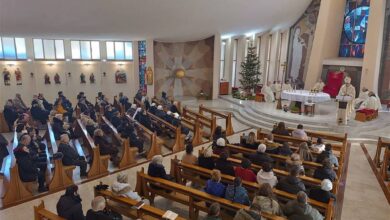Vijesti 2024. godina
Preminula Ruža Ištuk, majka fra Miroslava Ištuka, svećenika franjevca Bosne Srebrene

Draga braćo, obavještavam vas da je u ponedjeljak, 6. svibnja 2024. u 96. godini života, blago u Gospodinu preminula RUŽA IŠTUK, majka našega subrata fra Miroslava Ištuka.
Ukop i sv. misa zadušnica bit će u srijedu, 8. svibnja u 15 sati na groblju u Žiroviću (župa Ljubunčić).
Bratu fra Miroslavu i obitelji pokojnice iskrena sućut.
Pokoj vječni daruj joj, Gospodine!
FIA



